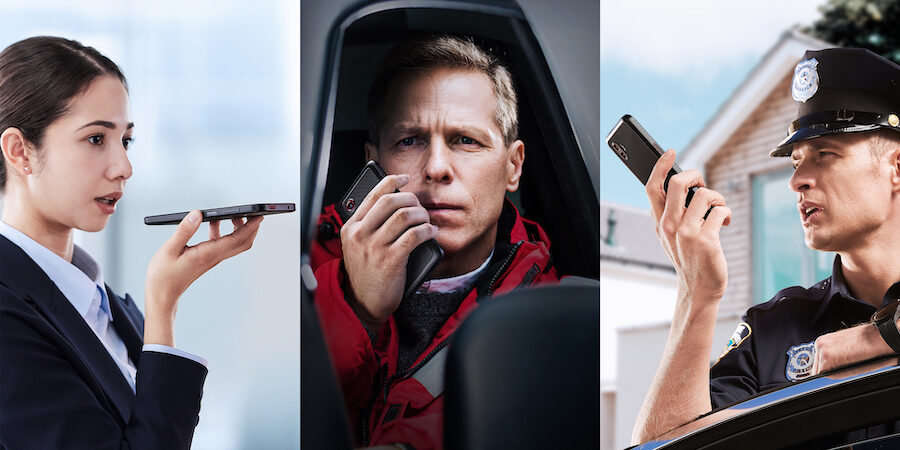The use of mobile devices has become integral to virtually all facets of society, and government workers are certainly no exception. Whether the situation involves office staff checking email, soldiers on deployment, or first responders engaged in emergency operations, the right mobile solution for each operational sector must be chosen to support the agency’s mission.
Since mobile offerings can vary widely, IT decision makers should consider a range of factors when choosing mobile government solutions to meet the diverse and demanding needs of federal workers. It’s also important to factor in the security and management of user-held mobile devices.
4 main factors to consider
To effectively mobilize today’s federal workers, government technology decision makers need to look at four critical areas:
1. Platform
Not every device is ideally suited to every government worker’s needs. For example, a forestry worker may require a more rugged device, while a procurement professional may need something with a bigger display for reviewing complex spreadsheets. From phones to tablets, device size and computing power should match worker needs, so employees aren’t burdened with unnecessary features or multiple devices that can become cumbersome in some work environments.
2. Applications
Today’s mobile devices serve largely as delivery mechanisms for the applications that power the work processes of an organization. In choosing an operating system, it makes sense to team up with a solutions provider who can deliver not just the hardware but also the development expertise needed to create apps that empower end users in the field. Many segments of government need specialized apps and some may need added security measures to ensure that operations are not compromised and data is properly protected. Commercial applications may not be robust enough for military use, nor sufficiently transparent for an agency processing a budget or financial transactions. Special consideration must be given to applications that are being used for the collection, transmission, and storage of citizen data.
3. Security
A critical aspect of mobile operations is safeguarding critical information and securing personally identifying information. Some mobile solutions come with security tools that are built in, such as Samsung Knox, which is defense-grade and uses a hardware-based cryptographic key that is unique to each device. Protecting data at rest (DAR) on mobile devices is a major concern for many government agencies.
Enhance critical incident response with mobile
Learn how to execute safer, more effective incident response with a mobile-first approach. Download Now
Samsung Knox Sensitive Data Protection (SDP) addresses this issue by decrypting data only after user authentication, providing per-file and per-data decryption keys, offering per-app password checks, and meeting Mobile Device Fundamental Protection Profile requirements for U.S. government and military use. Knox DualDAR adds two separate layers of encryption, further meeting the requirements of classified deployments. Knox DualDAR secures work profile data on devices with two distinct layers of encryption. The solution also protects data by restricting apps from writing or saving data to the unencrypted space on the device.
4. Manageability
To avoid disparate and disconnected inventory of mobile devices, government IT leaders should identify a mobile solution that enables them to seamlessly manage devices across the mobile workforce with comprehensive transparency and oversight. The most effective mobile device management tools empower admins to set device policies, map app licenses, locate devices, and perform other key management functions via the cloud. Samsung’s Knox Platform for Enterprise is built into Galaxy devices. It offers robust and flexible mobile device management (MDM) and enterprise mobility management (EMM) controls for IT that are accessible through Knox Suite or a wide range of partnered EMMs that accept the Knox Service Plugin.
While certain government sectors may face additional requirements, the four areas listed above provide a solid framework for getting the right devices into the hands of the right employees for greater productivity and efficiency.
Mobile devices in secure spaces
Secure workplaces introduce a unique challenge when it comes to mobile devices. Workers are often prohibited from bringing their mobile devices into these areas because they can introduce a serious security concern. However, productivity can significantly increase if workers can access information on their phones without compromising security in secure workplaces. Fortunately, a recent partnership between Samsung and Privoro now provides a solution. Samsung’s Galaxy S Series and Hardware Device Manager (HDM), paired with Privoro’s SafeCase, use hardware-to-hardware integration to control and block the phone’s radio and sensor peripherals — preventing cyberattacks at the hardware level. This approach can disable all RF radio capability and prevent eavesdropping by physically blocking cameras and microphones while allowing mobile devices access to data from emails, texts, and documents.
Building a secure mobile infrastructure
Samsung has also integrated Galaxy AI* into its flagship smartphones and Galaxy Tab S10 tablets. Given the many ways that government workers may require specialized apps, it makes sense for agency IT decision makers to seek out an innovative mobile provider that can offer not just a platform but also a high level of development expertise and support.
Government work, often mission-critical and tightly regulated, has become highly reliant on mobile devices. By considering the four key elements that define a mobile platform, and by pairing mobile hardware with a highly capable EMM, an effective infrastructure can be established that delivers security along with a high degree of productivity across the government landscape, including operation in secure spaces.
Our government technology solutions are ready to assist government agencies with their digital transformation.
*Galaxy AI features by Samsung will be provided for free until the end of 2025 on supported Samsung Galaxy devices.









